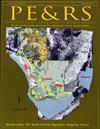Identification of Critical Urban Clusters for Placating Urban Heat Island Effects over Fast-Growing Tropical City Regions: Estimating the Contribution of Different City Sizes in Escalating UHI Intensity
IF 2
4区 地球科学
Q4 GEOGRAPHY, PHYSICAL
引用次数: 0
Abstract
The incessant rise of artificial surfaces has increased the temperatures of cities, distressing urban health and sustainability. Fast-growing tropical cities particularly call for an understanding of this phenomenon, known as the urban heat island (UHI). The present study was conducted to detect UHI dynamics over the National Capital Region of India. Stretching over more than 32 000 km 2 , this region consists of urban centers of varying sizes. Landsat thermal bands were processed to extract temperature patterns between 1999 and 2019. Urban climate change was prominent, as a 2349-km 2 expansion in UHI area was spotted. Urban clusters of different sizes were demarcated by applying the k-nearest neighbor algorithm on the normalized difference building index maps. This empirical analysis helped to form a logarithmic relation between city size and UHI intensity. Observed results set a framework to assess the thermal environment of numerous urban centers from any tropical country. UHI intensity values for various city sizes were computed, as they were crucial to decide the outdoor comfort zones based on the base temperature conditions of other cities. Further, the critical zones in each urban cluster were identified using the vegetation index, and scopes of landscaping were suggested based on the observed building morphologies of different local climate zones.快速发展的热带城市区域缓解城市热岛效应的关键城市群识别:估算不同城市规模对热岛强度升级的贡献
人造地面的不断上升提高了城市的温度,影响了城市的健康和可持续性。快速发展的热带城市尤其需要了解这种被称为城市热岛(UHI)的现象。本研究旨在检测印度国家首都地区的城市热岛动态。该地区绵延32000多公里,由大小不一的城市中心组成。对陆地卫星热带进行处理,提取1999年至2019年的温度模式。城市气候变化突出,城市热岛面积扩大2349 km2。在归一化差分建筑索引图上应用k近邻算法对不同规模的城市群进行划分。这一实证分析有助于形成城市规模与热岛强度之间的对数关系。观测结果为评估任何热带国家众多城市中心的热环境提供了框架。计算了不同城市规模的热岛强度值,因为它们对于根据其他城市的基本温度条件确定室外舒适区至关重要。在此基础上,利用植被指数确定了每个城市群的关键区域,并根据不同气候区域的建筑形态提出了景观范围。
本文章由计算机程序翻译,如有差异,请以英文原文为准。
求助全文
约1分钟内获得全文
求助全文
来源期刊

Photogrammetric Engineering and Remote Sensing
地学-成像科学与照相技术
CiteScore
1.70
自引率
15.40%
发文量
89
审稿时长
9 months
期刊介绍:
Photogrammetric Engineering & Remote Sensing commonly referred to as PE&RS, is the official journal of imaging and geospatial information science and technology. Included in the journal on a regular basis are highlight articles such as the popular columns “Grids & Datums” and “Mapping Matters” and peer reviewed technical papers.
We publish thousands of documents, reports, codes, and informational articles in and about the industries relating to Geospatial Sciences, Remote Sensing, Photogrammetry and other imaging sciences.
 求助内容:
求助内容: 应助结果提醒方式:
应助结果提醒方式:


